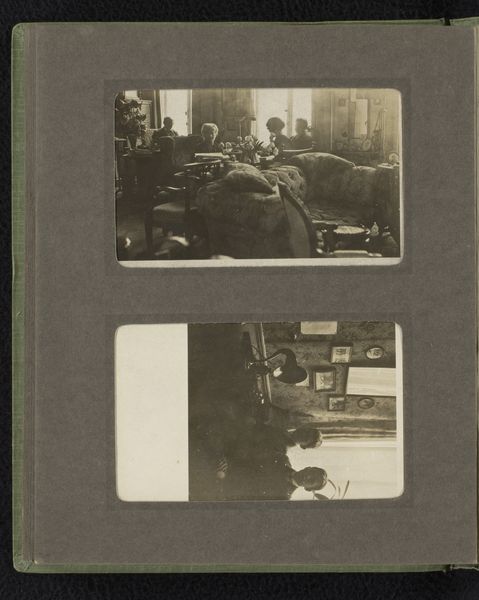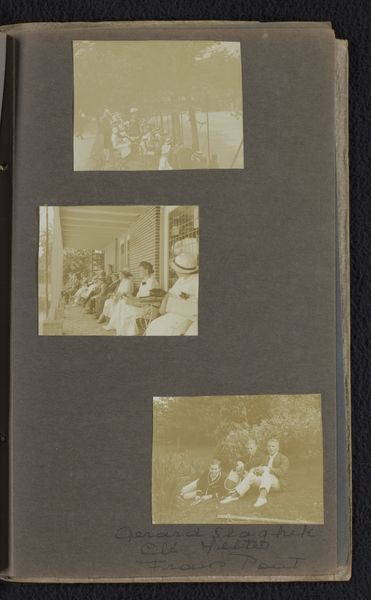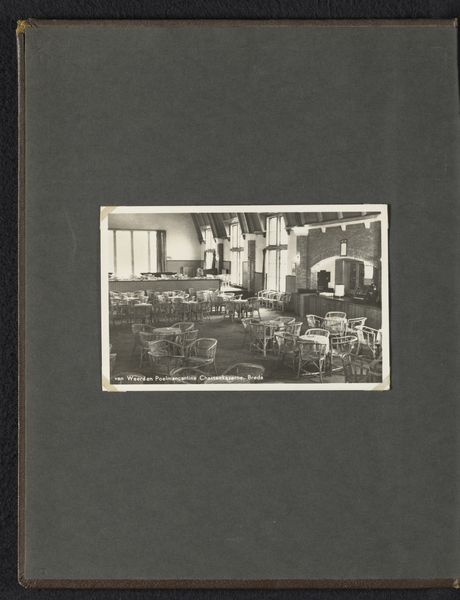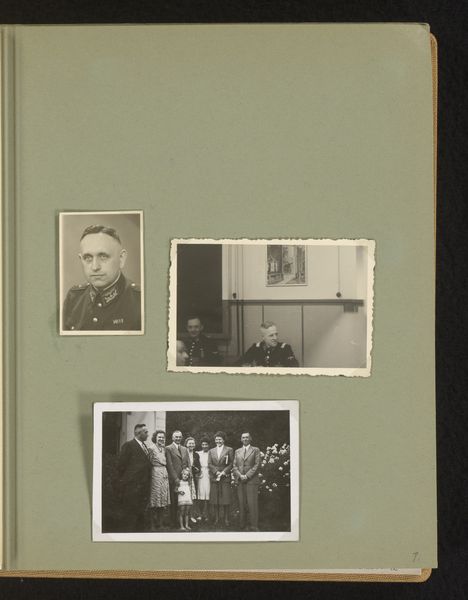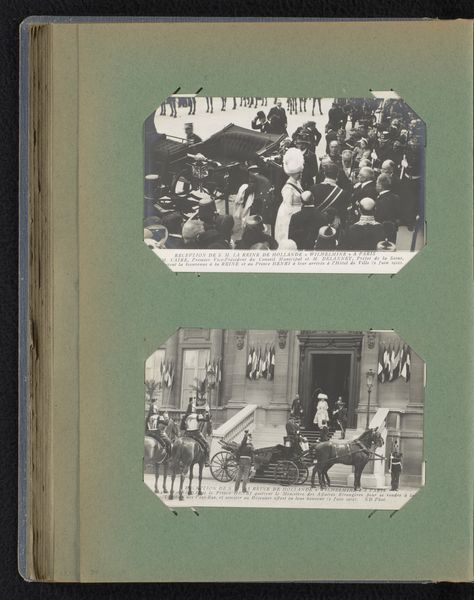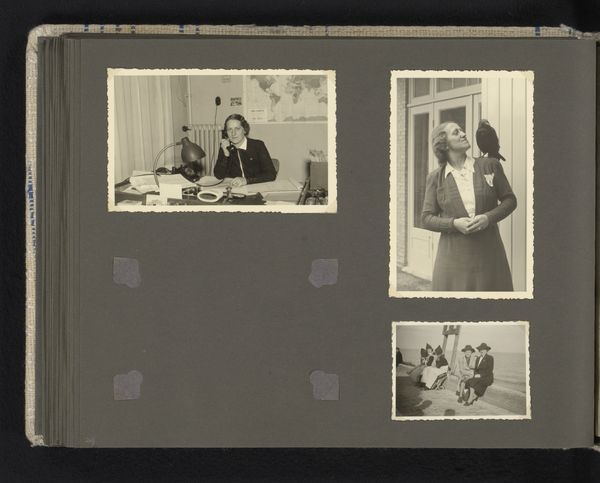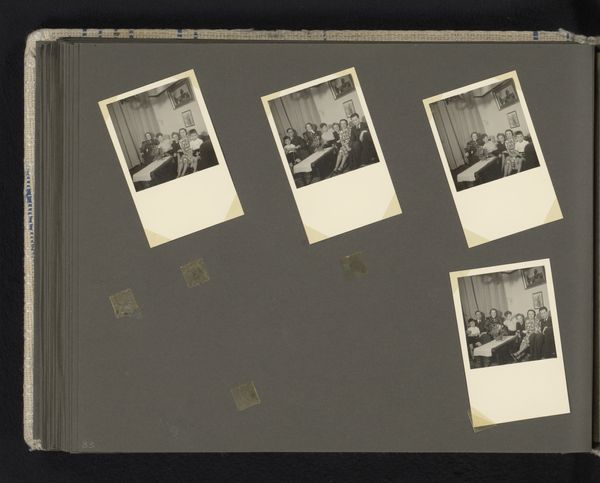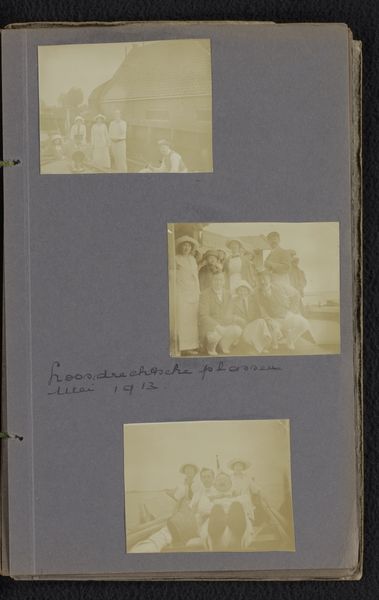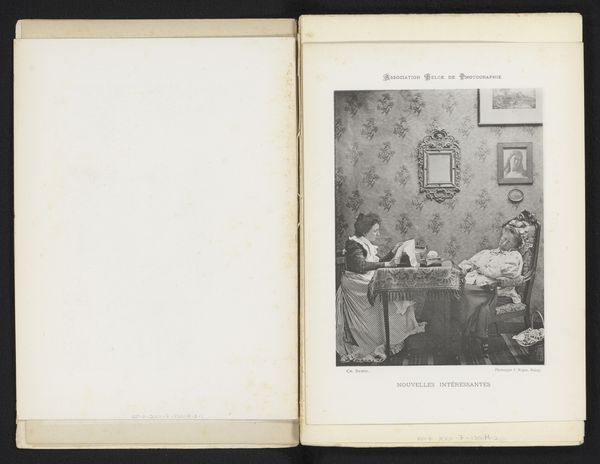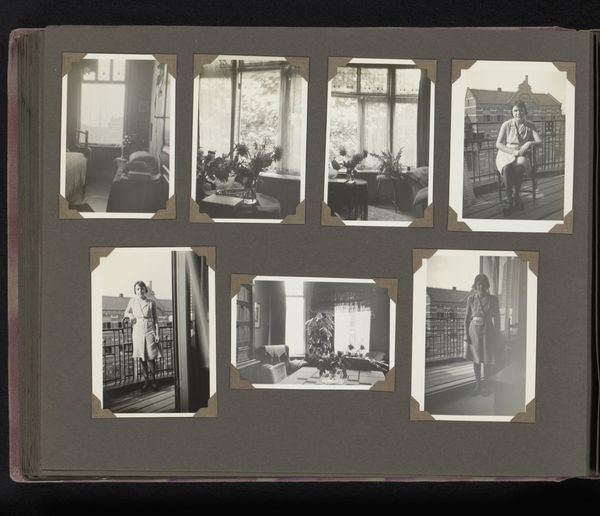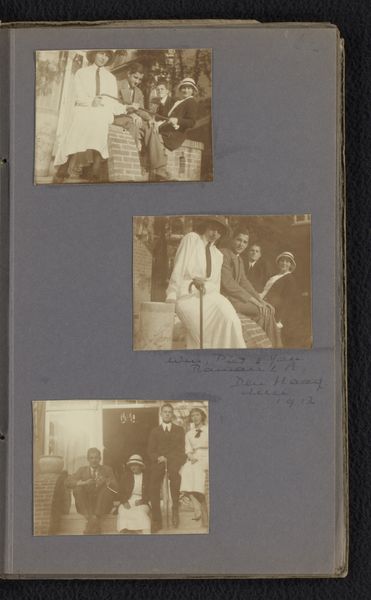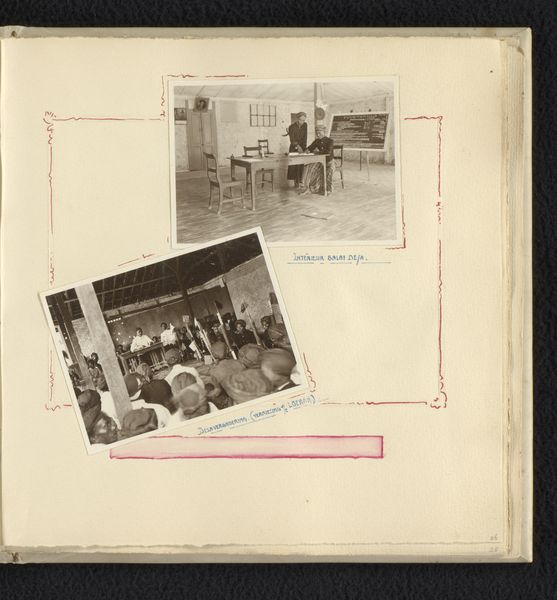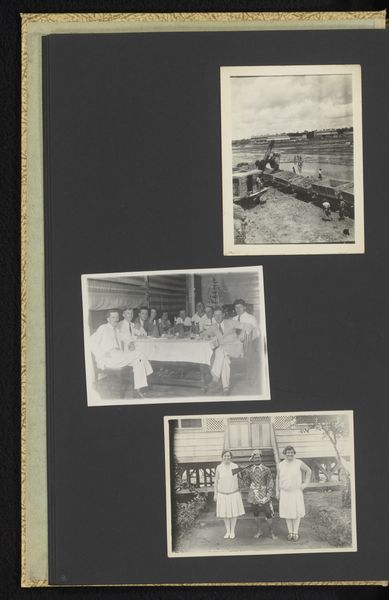
photography, gelatin-silver-print
#
portrait
#
photography
#
group-portraits
#
gelatin-silver-print
#
realism
Dimensions: height 90 mm, width 140 mm, height 240 mm, width 190 mm
Copyright: Rijks Museum: Open Domain
Curator: This fascinating photograph is entitled "Kerstfeest bij de Reichsbahn," or "Christmas Party at the Reichsbahn," tentatively dated to 1943. It appears to be a gelatin silver print, a fairly common photographic process at the time. Editor: It has a strikingly detached quality. Even celebrating what one presumes is supposed to be a joyful occasion, a Christmas Party, the photograph’s tonality conveys a strong sense of emotional constraint and reserved formality. Curator: Indeed. It’s particularly interesting as it eschews idealized imagery. Note the framing: instead of one formal group portrait, we see multiple vignettes carefully arranged on a larger page, all depicting scenes from this gathering. The textures—the glossy paper, the torn edges— speak volumes. Editor: It all comes down to process, doesn't it? Silver gelatin prints during wartime. Rationed materials, state control over media. Think of the labor involved in its production—the photographers, the developers, the distributors...all under wartime conditions. It reveals as much about material constraints as it does about capturing an event. The very act of producing such images implies state sanction and investment. Curator: But consider also the deliberate composition of each vignette. Each smaller picture is formally balanced. Each face appears distinct, each expression is finely articulated against the somber palette of black and white, amplifying a muted, shared emotion. These are the components that drive meaning. Editor: I see it the opposite way. Think about access; who had it, and what could and could not be depicted. Each print reflects both what the photographer *saw* and the official sanction granted by those in control. The very absence of explicit references to conflict creates another level of interpretation. How were such celebrations portrayed? For whom? What does this specific representation communicate beyond the immediate subject? The material process inherently directs the message. Curator: So you perceive this photograph primarily as a political statement then? It is undeniable. However, I still appreciate this photographic page on formal merits: the arrangements, composition, contrasts... All working harmoniously towards delivering a particular image. Editor: Well, the act of taking and then publishing it made it a political gesture no matter its aesthetic value, so to speak.
Comments
No comments
Be the first to comment and join the conversation on the ultimate creative platform.
